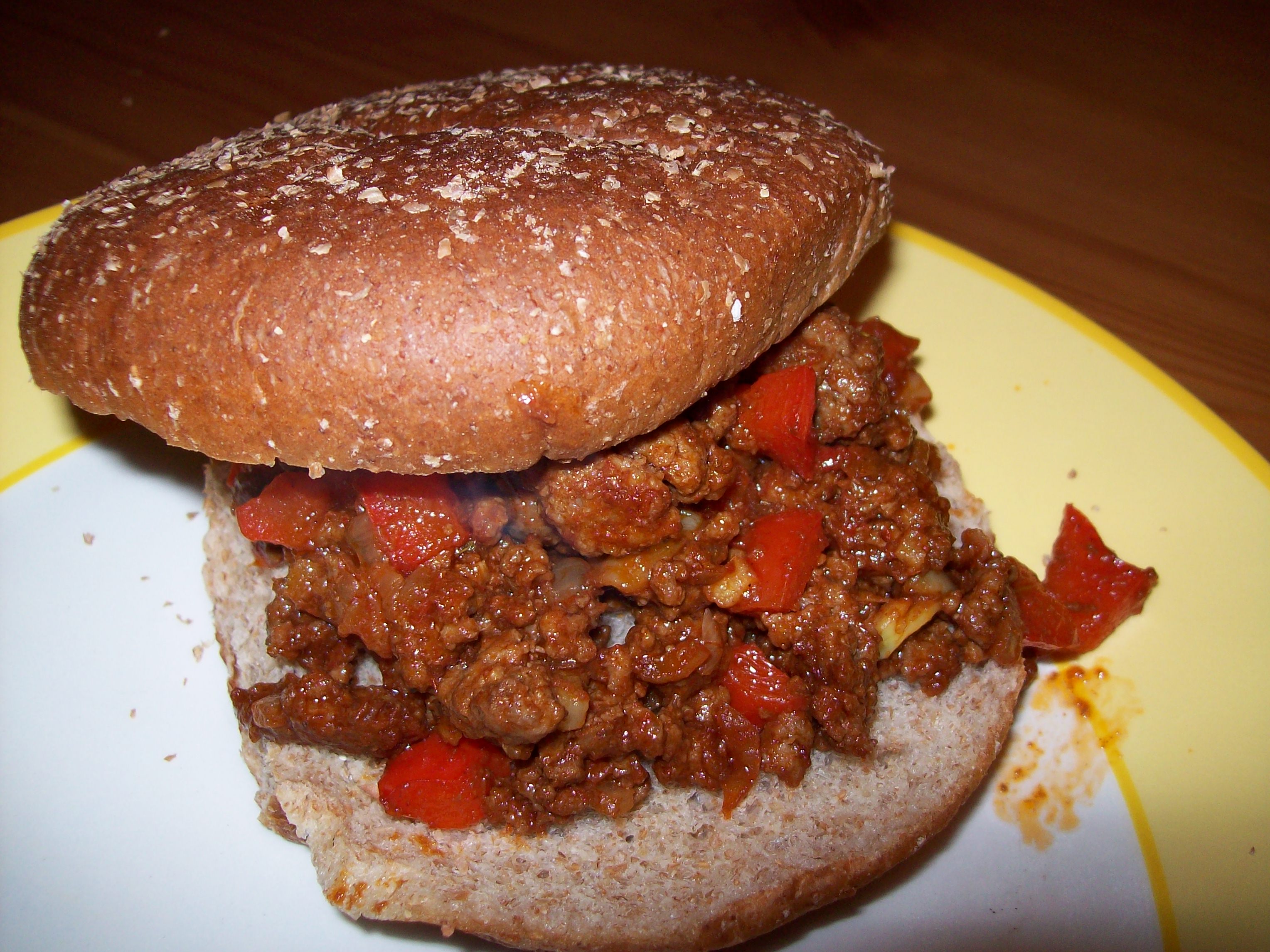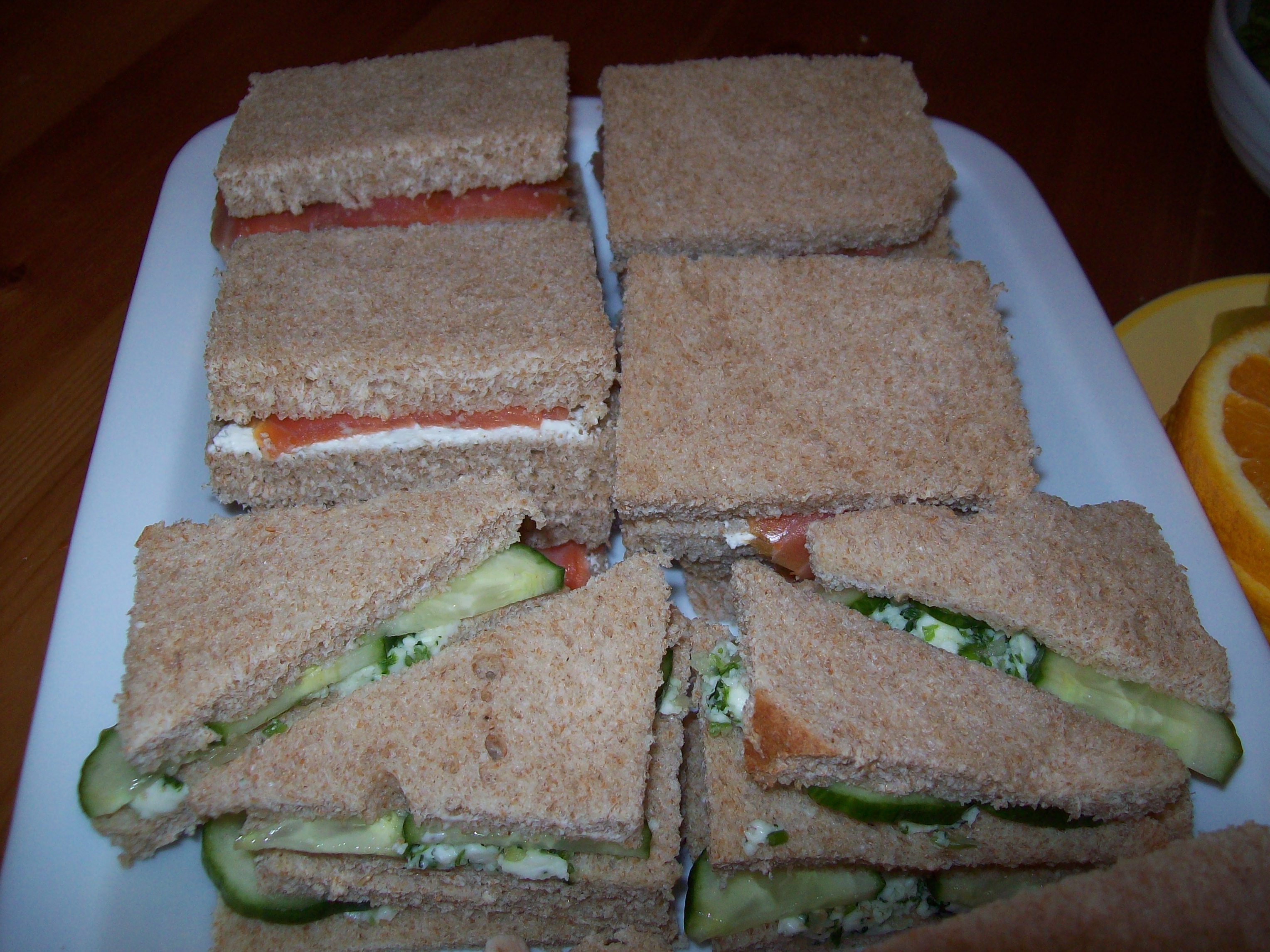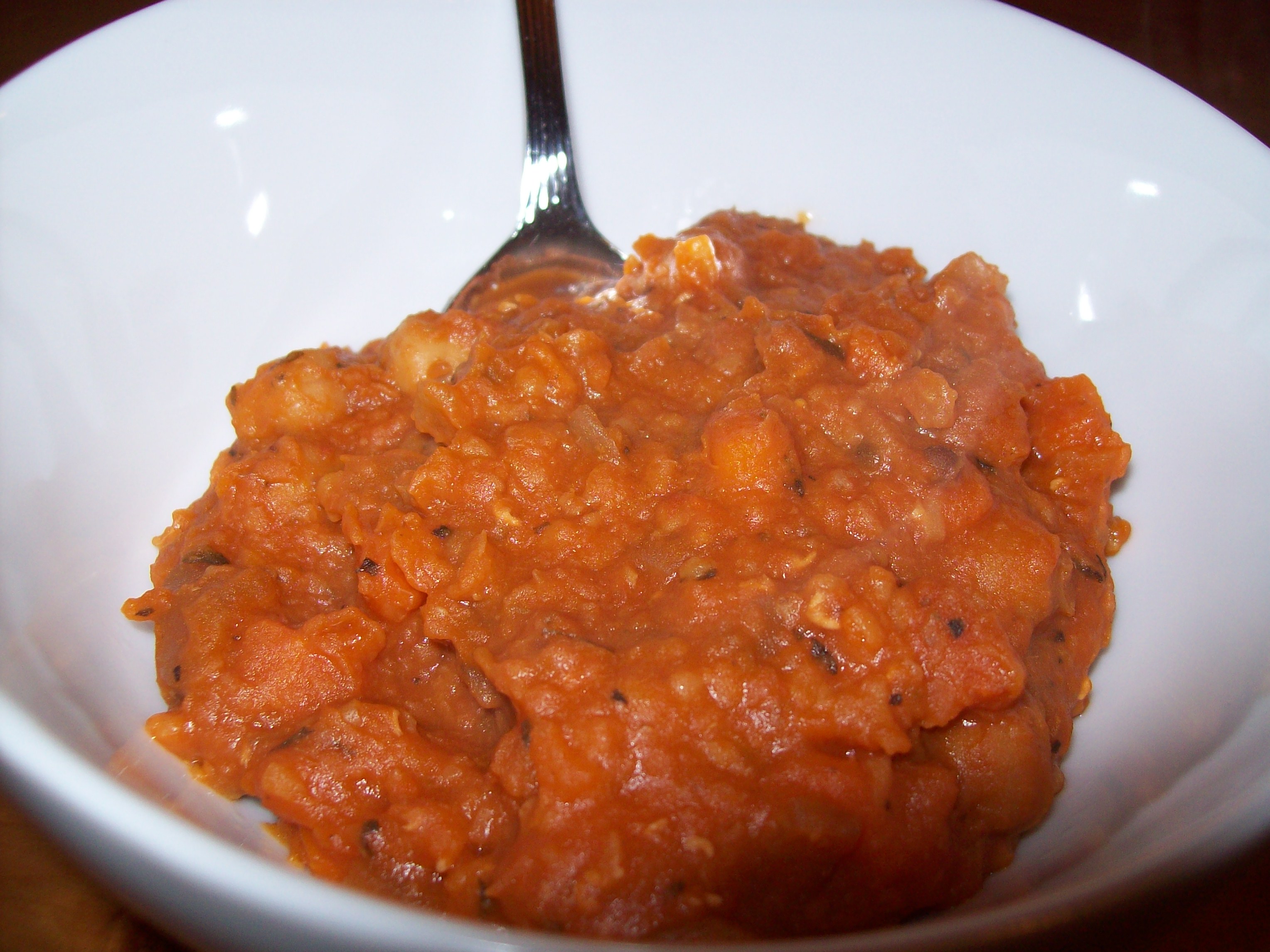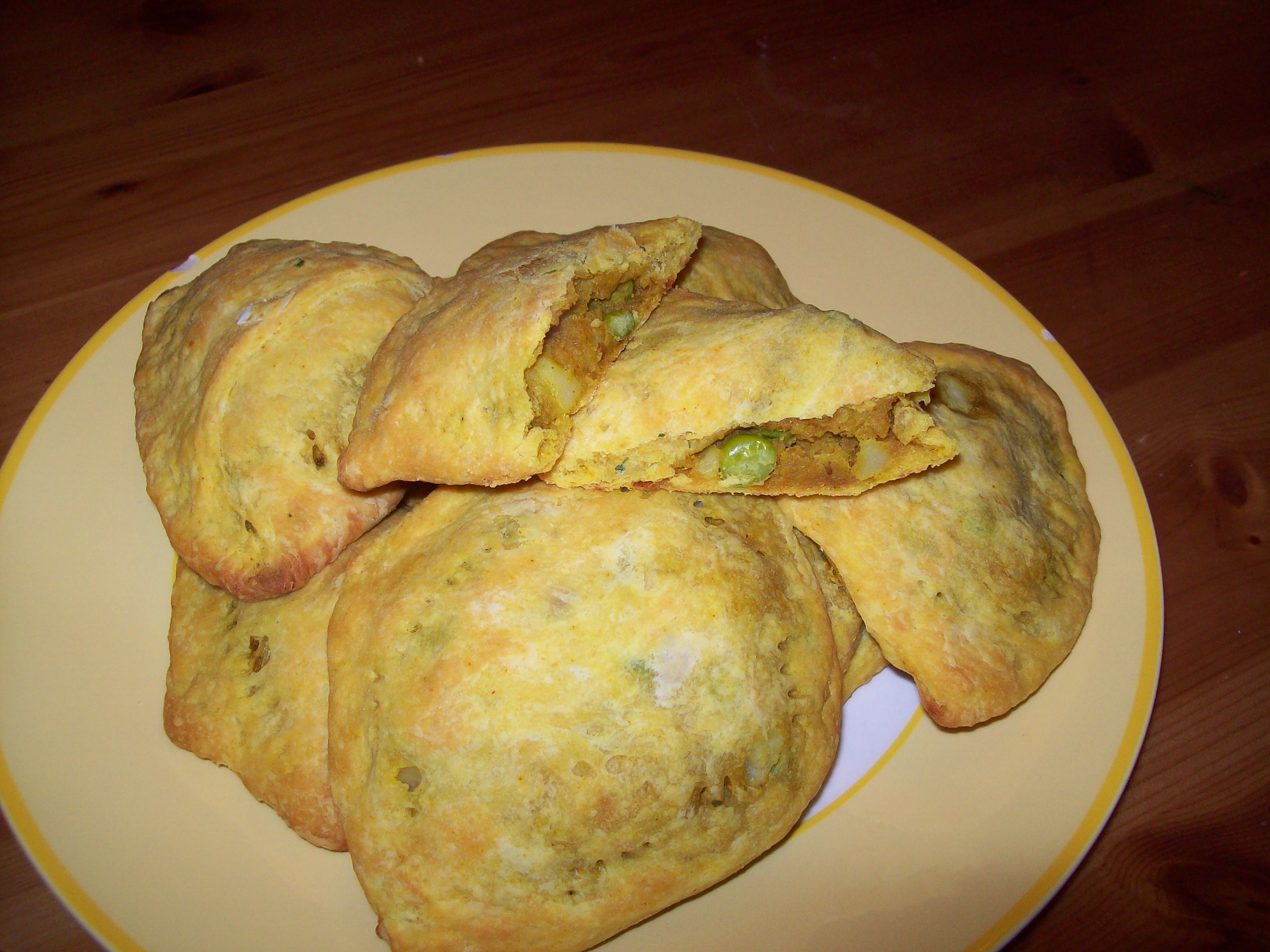
- Grass-fed beef Sloppy Joes on wheat buns

- Tea sandwiches three ways: Yogurt-dressed Chicken salad with bacon, smoked salmon, and cucumber with herb butter
The kids’ favorite, by far, was the Tea Party night. We served the sandwiches alongside a spinach salad with homemade raspberry vinaigrette, roasted sweet potatoes cut into the shapes of flowers and animals (yeah, I know, I’m against “cute food” — but Backyardigans week was already pretty precious), and fresh fruit. L. couldn’t wait to have the leftovers in his lunchbox the next day. He didn’t even mind that his classmates were all eating the requisite Friday Pizza while he was dining on smoked salmon and spinach.
My favorite, however, was probably the Anatolian lentil stew. Now, I won’t try to convince you that the Backyardigans actually mentioned this dish on their show; but they do reference samosas and mango lassis, which I served alongside the stew. I have just really been dying to try this recipe, which I found on a blog called
The Smart Palate. It’s written by a college friend of my sister’s and contains largely vegetarian, entirely amazingly creative and healthy foods. Although many of the recipes on the blog are not things I think my kids (or J., for that matter) would embrace with open arms, I’m inspired by all the great vegetarian ideas, and peeking at The Smart Palate is becoming a little bit of a foodie obsession for me. So when I saw a recipe that looked like something my family MIGHT be willing to eat, and which also seemed like a prime candidate for slow-cooker adaptation, I had to give it a try.
I followed the
basic recipe Nancy outlines, but in place of the red rice — which I couldn’t find — I used soaked bulgur wheat, something we’re familiar with and often have on hand. I also omitted the red chiles and just used a pinch of crushed red pepper flakes to ensure that the result wouldn’t be too spicy for my boys. Otherwise, I stayed faithful, simply pouring all of the ingredients into my slow cooker, mixing well, and cooking on LOW for about 9 hours. Right before serving, just as is recommended in the recipe, I brightened things up with some lemon juice and olive oil and adjusted the seasonings. (This, by the way, seems to be a CRUCIAL step, particularly if you’re doing the recipe in the slow cooker; otherwise, I’d imagine the dish would taste a little muddy and heavy.)
Although it thickened up perhaps too much (an extra cup of water wouldn’t come amiss, I think), and I found the flavor of the dried thyme slightly too prominent for my palate, it was still a fabulous vegetarian meal. It’s far too difficult, I think, to find great slow-cooker dishes that are meat-free, and this one actually satisfied me on many levels. The red lentils cook down until they’re creamy and give a full-bodied texture to the stew; the bulgur actually disappeared and became just a hearty backnote to the whole dish. It’s not spicy; I’d call it sort of fragrant, and gently flavorful, but not anywhere near as pungent as I think I first imagined it would be when I read the recipe.
J. liked it, though he said it wouldn’t be his first choice; but I consider this great progress from a guy who used to despise anything containing a chickpea, lentil, or legume of any kind. The kids weren’t super-thrilled, but L. ended up eating about half his bowl and said it was “pretty okay.” I happily ate a full bowl and had the leftovers for the next day’s lunch, dipping my samosa into the stew and relishing my lovely meat-free delicacies in the office cafeteria amidst the aromas of take-out fried chicken and microwaved burritos.
The best thing, I think, about this whole week of food adventures was that we managed to strike an elusive compromise between dinners that were exciting for the kids, and meals that everyone in the family would actually want to eat. Better yet, we didn’t sacrifice health or nutrition or our food values in doing so — everything we ate was a whole food or began its life as a whole ingredient, everything was made from scratch, and everything was somewhere on our desired spectrum of organic, local, responsibly raised, sustainably produced, etc., etc.
Will I do it again? Maybe not right away. I will, however, continue to ask L. for his input on meals and meal planning, and consider more creative ways to keep him engaged. He was so beautifully and innocently appreciative of our Backyardigans adventures at the table; I think all parents envision their children being so interested in food, both cooking it and eating it, with such simple joy and curiosity. So tonight, I took some extra time after dinner to let him help me knead the dough for our first attempt at homemade whole-wheat pita bread; I let him plan the entire menu for his school lunch for tomorrow; I answered all his questions about yeast and honey and other various ingredients and helped him practice his emerging reading skills on the labels of things in the pantry. He’s learning about our family values and priorites at the kitchen counter with me and around our table every night, and I’m invested in keeping him — and P., as he gets older — interested, curious, and asking the right questions.





Glad to see you back! Missed your blog posts.
Aw, thanks! It’s good to be back!
Looks like your family has been eating very well lately 🙂 Yummy stuff. Thanks for the kind words and link. And I’m so curious — who is your sister? You mentioned we were classmates, I’m intrigued!
Hey, thanks! My sister is Danielle Kellogg. 🙂 She’s the one who first recommended that I check out your blog!
oh, Danielle! My fellow Classics major 🙂 Very sweet of her to tell you about the blog, and nice to ‘meet’ you out here in the blog-o-sphere!
Nice to “meet” you too, even if only electronically! Yes, she and I share our foodie obsessions, and we’re always sending one another great things to read. She was particularly pleased to be able to tell me that the Smart Palate was yours. 🙂